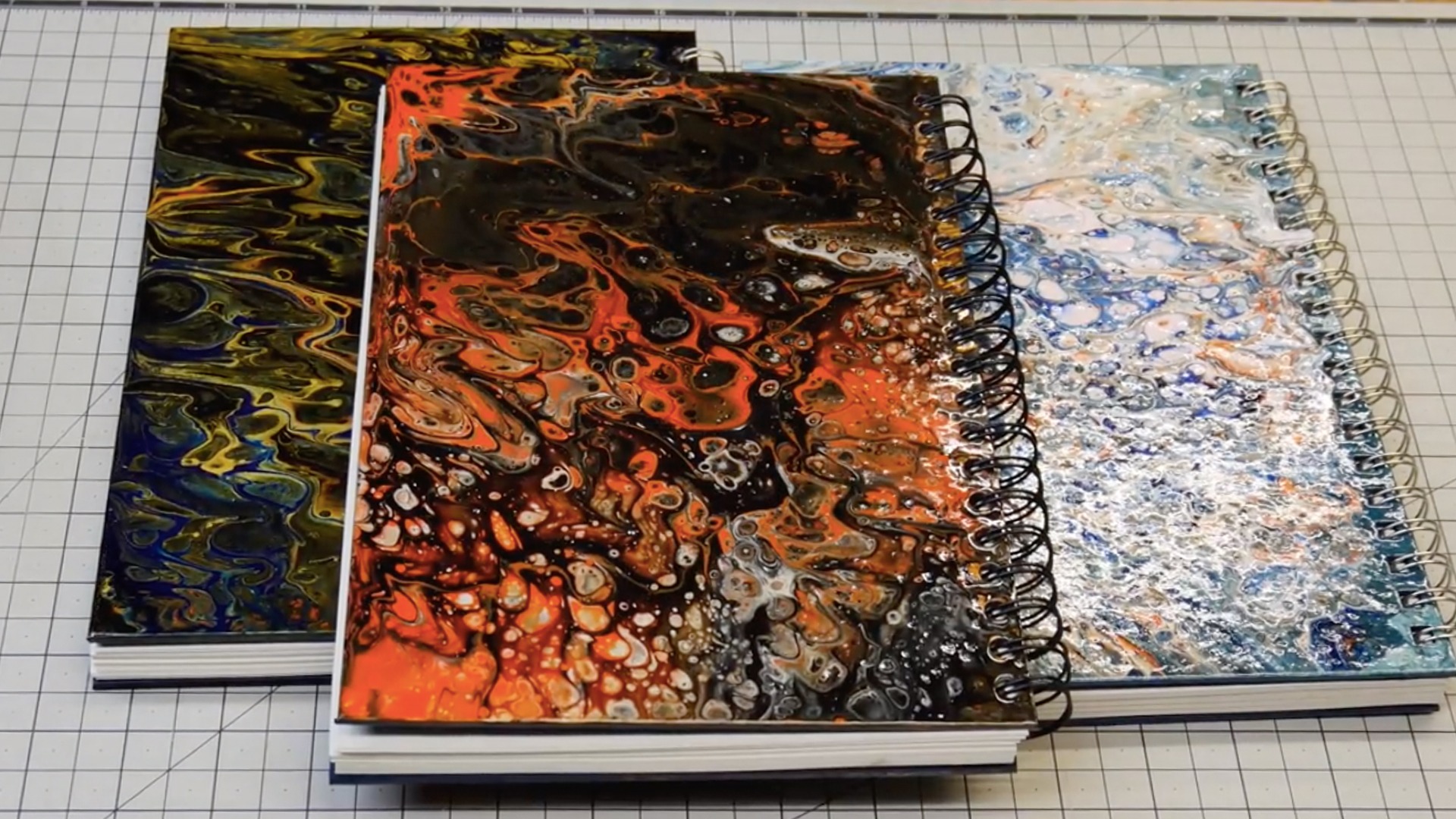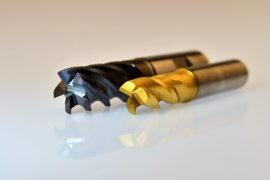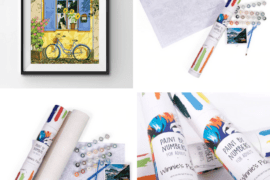EWhile it’s important to make your design projects look good, this goes double for the tools you use to peddle your craft. How else are clients going to know you make well-made products if the sketchbook you’re using has a Hello Kitty cover on it?
Taking a break from working on commissioned projects, Eric Strebel shows his audience how to make custom sketchbook covers by pouring acrylic paint over some matte boards:
Taking two 7-inch by 10-inch, 2.3mm thick matte boards, he wraps the outside covers in bond paper using white glue and some spray mount. Once the adhesive has settled in, he sets in the inside covers to cover the folded edges of the outer covers.

To prepare them for the acrylic, Strebel slathers shellac over the covers in hopes that they won’t warp from all the liquid being poured on them. Finally, he uses a $30 hole puncher he got from eBay and a hammer to punch in the holes which will bind the covers to the sketchbook.

Now for the fun part: actually painting the sketchbooks. Stebel mixes his sponsored Arteza acrylic paints and decants some silicone for pouring on the acrylics to make them spread. He and one of his friends tip their first black-and-orange paint mixture cups onto the center of the covers and start spreading the paint around by tilting the boards.

With the first two covers done, they work on another set of boards—this time using a mixture of gold, blue, black, and orange paints. To keep the paint evenly spread, they use pieces of wood to smear the mixtures over the hard-to-reach edges of the covers. Likewise, they make use of a food torch to pop the air bubbles that emerge from the poured mixture.

The third set of covers use a mixture of blue, white, orange, and black acrylic paints. Each of these mixtures consists of 40 grams of paint, 40 grams of water, and 40 grams of Floetrol (which helps with paint flow and makes it easier to work with) to make the solution as creamy as possible.



To finish the sketchbooks, he sprays the inside covers with some paint and adds a urethane finish to the outside covers. Strebel also takes some paper from some brand new sketchbooks and cuts it down to provide the filler for the inside of his new creations.

As always, you can find more of Eric Strebel’s creations on his YouTube page.







